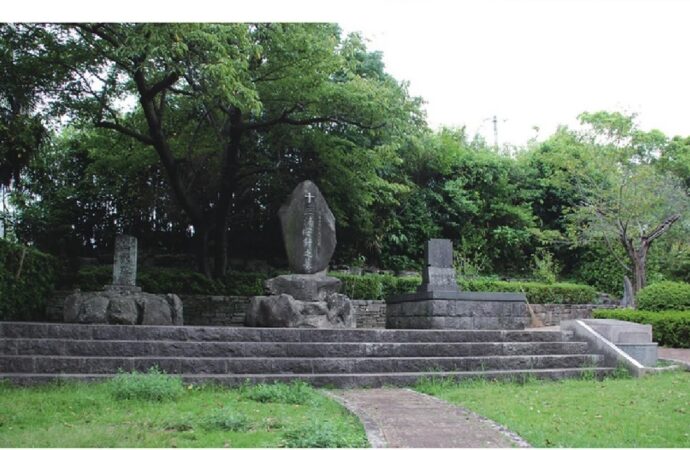William Adams was an English navigator born in England in 1564. In 1600, Adams embarked on an expedition by a private Dutch fleet to the orient.
Of the five ships that sailed the oceans, only the one in which Adams sailed on survived and landed in Japan. There, the sailor became a diplomatic advisor to the government of Edo, now known as Tokyo. He was given the name “Miura Anjin” (“Miura” comes from the name of the territory, and “Anjin” means “pilot”).
Adams thus became the first Englishman to hold the revered position of Samurai, a military nobility title usually granted to warriors. Miura Anjin refused to go back to England with the British East India Company and reportedly died in 1620 in Hirado.
The Shimabara Rebellion
Shortly after his death, the Shimabara Rebellion led to the prohibition of Christianity and the destruction of foreign graveyards. According to the legend, a close family friend saved and reburied Adam’s bones into a new grave.
In 1931, a Japanese team allegedly found Adam’s grave and later reburied his skeleton. In 2017, the human remains matching the description of those found in 1931 were found and examined. The results are now published in the journal Scientific Reports.
Archaeological excavations and DNA analysis
The grave found in 1931 was a rectangular coffin. While circular shape graves were the norm for most native Japanese during the Edo period, foreigners were usually buried in rectangular graves. Thus, the findings suggest that the grave found in 1931 belong to a foreign nobleman.

The human skeleton remains — fragments of the skull, scapulae, vertebrae, ribs, femurs, and one molar — were subjected to radioisotope analysis. Radiocarbon dating allows for the determination of the age of objects that contain organic material by measuring the content of carbon 14, an isotope that decays with time.
The radiocarbon age of the skeletal dates to around 410 years. This is consistent with the historical records of Adams’ death in 1620. Moreover, the ratios of carbon and nitrogen reflect the diet of the individual. The team found that the individual had dietary habits similar to most Japanese during the Edo period.
DNA analysis was limited due to the poor preservation of the specimens collected. The team did, however, performed an examination of mitochondrial DNA. Unlike DNA from the cell’s nucleus, mitochondrial DNA is inherited only from the mother. Its analysis can be used to trace down individuals of the same maternal lineage and draw phylogenetic trees. The results suggested that the remains belong to an individual of Northern or Western European descent.
The first English Samurai: European Heritage and Japanese Habits
By combining DNA analysis with radiocarbon dating, the team from Toho University School of Medicine concluded that, despite being of European descent, the man had lived in Japan for a long time. Hence, although these findings are not yet conclusive, they suggest that the skeleton found in 1931 did belong to Miura Anjin, the first Englishman Samurai.
Researchers advise that to confirm the identity of Miura Anjin, they still need to compare the DNA analysis of the skeletal remains with a relative of the Miura Anjin. Identical studies were performed during investigations of Richard III of England’s remains in 2014.
Sources:
– Mizuno, F., Ishiya, K., Matsushita, M. et al. A biomolecular anthropological investigation of William Adams, the first SAMURAI from England. Sci Rep 10, 21651 (2020). https://doi.org/10.1038/s41598-020-78723-2
– King, T., Fortes, G., Balaresque, P. et al. Identification of the remains of King Richard III. Nat Commun 5, 5631 (2014). https://doi.org/10.1038/ncomms6631
Images Credit: Mizuno, F., Ishiya, K., Matsushita, M. et al. A biomolecular anthropological investigation of William Adams, the first SAMURAI from England. Sci Rep 10, 21651 (2020). https://doi.org/10.1038/s41598-020-78723-2





